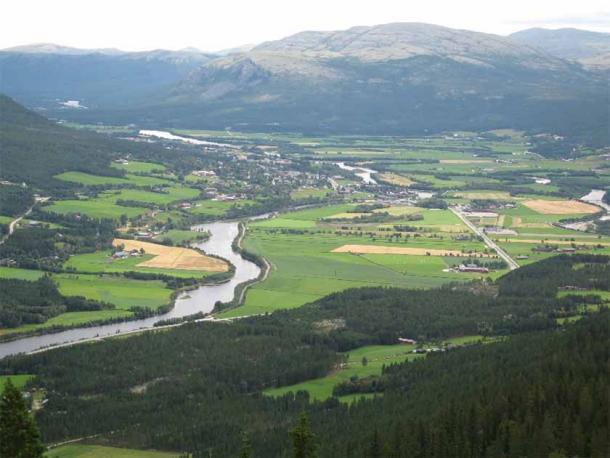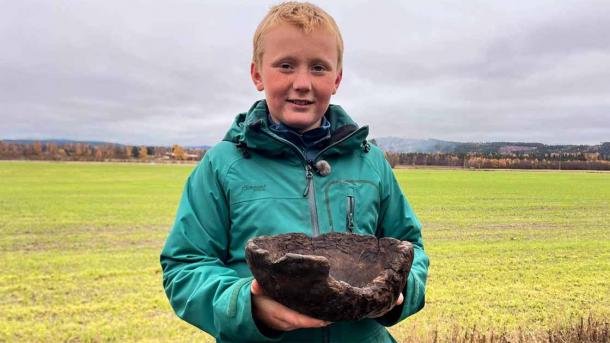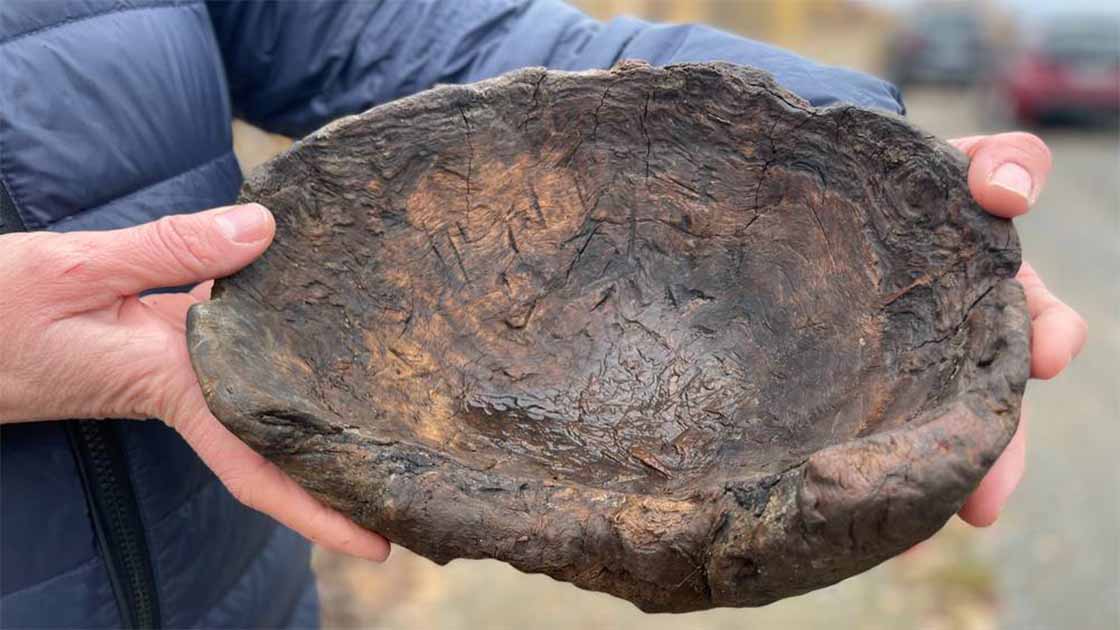Ten-Year-Old Finds Rare, Wooden, Viking Age Bowl in Norway
Rowing out to a swimming spot on the Glomma River with his father, 10-year-old Erik Briskerud noticed what looked like a root in a sandbar. To his delight, the object that he unearthed turned out to be Late Viking Age wooden bowl nearly a thousand years old!
A routine father-and-son swimming expedition in August this year took an exciting turn for Erik and his father Mathis Briskerud when the observant 10-year-old spotted something stuck in a sandbar, the Norwegian Broadcasting Corporation NRK reported. Although it initially looked like a root, Erik, who obviously has a curious mind, decided to investigate because he thought it an odd place for a root to be lying. The duo were out in a boat on the Glomma, Norway’s longest and most significant river.
- Vikings in Ireland: Recent Discoveries Shedding New Light on the Fearsome Warriors that Invaded Irish Shores
- The Vale of York Hoard: The Finest Silver Viking Treasure Find in the UK

The Glomma or Glåma River stretches 386 miles (621 kilometers) across Norway. What other ancient discoveries await? (Andewa / CC BY SA 3.0)
A ‘Root’ Turns Out to Be a Very Special Find
Intrigued by what looked like a tree root lying all by itself in the sand, Erik decided to take a closer look. “I went and picked it up, and eventually found out that it wasn’t a root,” NRK reported.
The object he saw was stuck in the sand, so he and his father rinsed off all the sand to see what it was. After rinsing, they found what looked like a bowl. As they soon discovered, it was not just any old discarded bowl but one of the most special bowl finds ever in Norway!
- A New Lead in the Search for Elusive Norse Settlements
- Can Oceanic Archaeologist Finally Zero in on Elusive Lost Viking Colony?

An observant young Norwegian boy has discovered a remarkably preserved wooden Viking Age bowl. (Vibecke Wold Haagensen / NRK)
A 1,000-year-old Artifact
Erik was sharp-eyed enough to realize that what he had picked up wasn’t a piece of scrap wood that could be thrown away. “I saw that some kind of tool had been used on it, because there were such nice edges in the bowl,” he said, according to NRK.
Although Mathis wasn’t so enthused by the find, feeling that it had probably lain too long in the sand to be of any value, Erik was more optimistic and they decided to send it to the local Innlandet County Council. The council sent a tiny fragment to Florida in the United States for dating.
The answer that came just a few days ago was very thrilling for Erik. He had unearthed an 800-1,000-year-old wooden bowl dating from Late Viking times. “I think it's very cool. I didn't think it was from the Viking Age. Quite amazing that it is so old,” he is reported as saying by NRK.
Meanwhile, Innlandet County Municipality archaeologist Mildri Een Eide said that it was difficult to explain just how significant the find was. Before this, wooden bowls of this ancient vintage have only been found in fragments in Norway. “So this one is very special. Considering the age, she says that we do not know of any other finds of this kind in Norway. We think it is most likely made from a ball of wood or a wooden knot found on many trees and hollowed out. We had to pinch ourselves a couple of times. We guessed the 18th century, but it turned out to be much older.”
What makes the find even more remarkable is the fact that it is only a roughly hewn object and obviously did not belong to anyone rich and powerful. “It is rare to find objects that belonged to ordinary Viking Age people. This is not an ornamental object,” she said.
The Sand Acted as a Preserving Agent
It is astonishing that the wooden bowl has lain around for so long in such a sodden environment and remained intact. Eide credits the Glomma sand for this. According to her, there is little oxygen in the sand in Glomma so the bowl has been lying safely and hasn’t disintegrated, “a bit like a marsh corpse.”
Speculating about how the bowl ended up in the sand, Eide says that perhaps the Glomma looked different that long ago. Or perhaps the bowl was brought there by the river current.
However, Eide isn’t too hopeful about the possibility of more artifacts being found in the sandbank. It is difficult to dig in the water, so a formal excavation is unlikely to take place there any time soon, according to her.
The bowl has been sent to the Cultural History Museum in Oslo, which will take good care of it and preserve it for posterity, Eide assures Erik. The archaeologist is impressed with 10-year-old Erik for realizing that he had stumbled on to something special: “So we owe him a big thank you.”
Top Image: This 1,000-year-old wooden Viking Age bowl was found in the Glomma River sandbank by a young boy. Source: Vibecke Wold Haagensen / NRK
By Sahir Pandey
References
Brevig, A. October 24, 2022 . Erik (10) fant unik trebolle fra vikingtiden på badetur. NRK. Available at: https://www.nrk.no/innlandet/erik-_10_-fant-en-helt-spesiell-gjenstand-fra-vikingtida-da-han-skulle-bade-1.16148375.
Erik (10) found a very special object from the Viking Age when he was going to bathe. October 24, 2022. Norway Posts English. Available at: https://norway.postsen.com/local/60284/Erik-10-found-a-very-special-object-from-the-Viking-Age-when-he-was-going-to-bathe-%E2%80%93-NRK-Innlandet-%E2%80%93-Local-news-TV-and-radio.html.




















Comments
I’m just a student/scholar of all free and available web-based bodies of knowledge as relates. I don’t take ‘credentials’ very seriously, based upon what many credentialed sources put out – i.e., diversions, illogic, and flat wrong stuff.
Nobody gets paid to tell the truth.
What are your credentials, Pete Wagner?
Bogs are the result of plant life dying VERY QUICKLY, proceded by an environment not condusive to the composting organisms. A bog can become a river, where water begins to flow. No water flowed there during the Ice Age.
Nobody gets paid to tell the truth.
Seems to me a “fragment” would be of the bowl, nothing said about dating the sediment. Nothing in the article about a bog , that’s a free flowing river, don’t think that’s how a bog forms either. No wonder the question about your credentials.
Did they date the wood or the sediment? Submerged wood can actually be much older than can be accurately carbon-dated. Dating the sediment can be WAY OFF, depending upon how that sediment accumulated. This is interesting: https://www.al.com/news/mobile/2017/06/underwater_forest_discovered_alab... There could be pre-Ice Age wood in many places. Just understand what must happen for a bog to be created, and the very few scenarios that could do it – such as a global calamity that darkens the sun for years and years, or a rapid sea level rise.
Nobody gets paid to tell the truth.